🍇 Kramer Vineyards Blog: Discover Wine Tips, Stories, and More 🍷
Welcome to the Kramer Vineyards blog, your go-to resource for all things wine! From expert pairing tips and behind-the-scenes vineyard stories to seasonal inspiration, discover the artistry, history, and passion behind every bottle. Explore our latest articles and uncover new ways to enjoy exceptional wines.
Never Miss a Story!
Subscribe to the Kramer Vineyards newsletter for the latest wine tips, pairings, and stories.
A Big One for Sparkling Wines
Kramer Vineyards harvest larger than ever before
Kramer Vineyards celebrates its largest harvest in 30 years with a record-breaking offering of sparkling wine. Winemaker Kim Kramer's passion for sparkling wines, known for their precision, brings delight to wine lovers. To further celebrate, the family-owned winery will offer 14 sparkling wine releases.
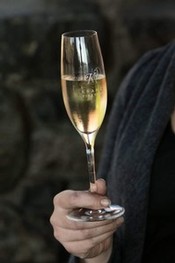 “We’ve always loved sparkling wines. They are extremely challenging to make because they’re wines of such precision,” said Winemaker Kim Kramer, who’s been producing sparkling wines since the early 2000s. “It’s rewarding to see the delight these wines bring to people’s faces and to see them return for more.”
“We’ve always loved sparkling wines. They are extremely challenging to make because they’re wines of such precision,” said Winemaker Kim Kramer, who’s been producing sparkling wines since the early 2000s. “It’s rewarding to see the delight these wines bring to people’s faces and to see them return for more.”
Dedicated to sharing the delight of its fizzy wines while quenching the thirst of a growing sparkling wine demographic, Kramer started its own sparkling wine club.
Kramer Vineyards is releasing a new collection of traditional method sparkling wines from its estate vineyard in the Yamhill-Carlton AVA to celebrate the bounty of the harvest. These wines are all bottle fermented and composed of Pinot Noir, Chardonnay, and/or Pinot Meunier. This traditional sparkling collection includes vintage and nonvintage Brut, NV Brut Reserve, NV Brut Blanc de Blancs, NV Brut Blanc de Noirs, and NV Brut Rose. Kramer has been experimenting with extended tirage sparkling wines, so expect to see those releases.
If you want more information about this topic, please get in touch with Kim Kramer at (503) 662-4545 or email at kim@kramervineyards.com.
2017 Harvest Report
Bud Break Through Veraison

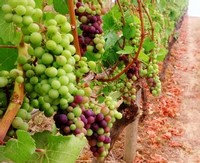 With our fullest crop in years, and a warm and dry forecast, we were on track for a big harvest. 2017 had some catching up to do for heat units, and by early September our GDDs were even with 2016. This, combined with low disease pressure, and an anticipated late September/early October harvest contributed to our decision to do minimal cluster thinning. In these conditions, carrying a heavier crop load forces the vine to work harder, slowing down ripeness, resulting in more balance.
With our fullest crop in years, and a warm and dry forecast, we were on track for a big harvest. 2017 had some catching up to do for heat units, and by early September our GDDs were even with 2016. This, combined with low disease pressure, and an anticipated late September/early October harvest contributed to our decision to do minimal cluster thinning. In these conditions, carrying a heavier crop load forces the vine to work harder, slowing down ripeness, resulting in more balance.
Six Weeks of Harvesting
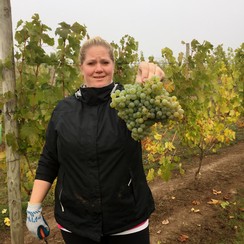
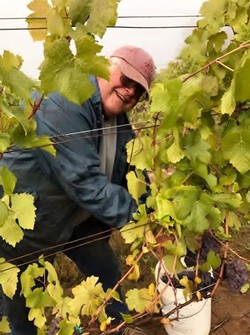
On the Crush Pad and in the Cellar
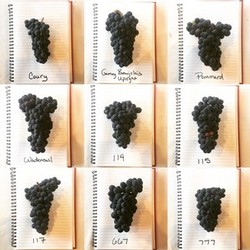
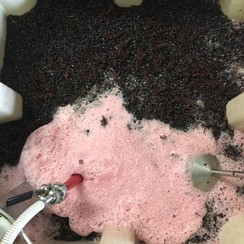
For the white wines, fermentations were steady and healthy. Tank space is always a concern in years where yields are high, and in some cases, we elected to ferment in stainless or neutral barrels. In addition to barrel fermented Chardonnay, we also have Pinot Blanc, Pinot Gris, and Pinot Noir Blanc wintering over in barrels. These vessels will be stirred bimonthly through the spring, and either blended in with their tank counterpart to enhance mouthfeel and complexity, or be bottled on their own in the fall of 2018.
As we put another harvest behind us, the 2017s are wintering over in tanks and barrels. After the New Year, we’ll begin to taste the wines individually, and start to make blending decisions and form bottling plans. The first wines of the vintage will be available in a few months, some won’t be bottled until the spring of 2019. We are looking forward to what this record-setting harvest has in store.
Vintage vs Nonvintage in Sparkling Wines
Explore the distinction between vintage and nonvintage sparkling wines. Vintage wines reflect a specific grape harvest year, while nonvintage blends combine grapes from multiple years. In the US, wines labeled with a vintage year consist of 95% grapes from that year. Nonvintage wines, including those from Champagne, showcase the expertise of blending specialists who artfully combine base wines from different years to create a consistent house style.
At Kramer Vineyards, we have a unique approach to our sparkling wines. Our two nonvintage wines are estate-grown, showcasing the expression of our vineyard site. The composition of these wines varies, with each vintage offering its own character and style.
Notably, our Brut Reserve base wines undergo fermentation and aging in neutral French oak barrels, resulting in added richness, palate weight, and structure compared to stainless steel aging. Meanwhile, our 2015 vintage Brut stands as a wine of both place and time, benefiting from that year's warm and balanced fruit. With an increased proportion of Pinot Meunier in the blend, this vintage exhibits enhanced midpalate presence and fruity aromas. The fruit for this wine is sourced from dedicated blocks within our vineyard, and the blend is carefully determined based on the yields at harvest.
The nonvintage wines in the glass present a fine, delicate mousse with pronounced yeastiness and a focus on tree fruit flavors. On the other hand, the vintage wines captivate with their fresh, light nature, featuring a delicate and abundant bead and showcasing minerality and citrus notes. As these young wines evolve in the bottle, their tone and texture will transform, making it a thrilling journey to witness their progress.
Discover the nuances between vintage and nonvintage sparkling wines, the art of blending and the expression of our vineyard site, through the exceptional offerings from Kramer Vineyards.